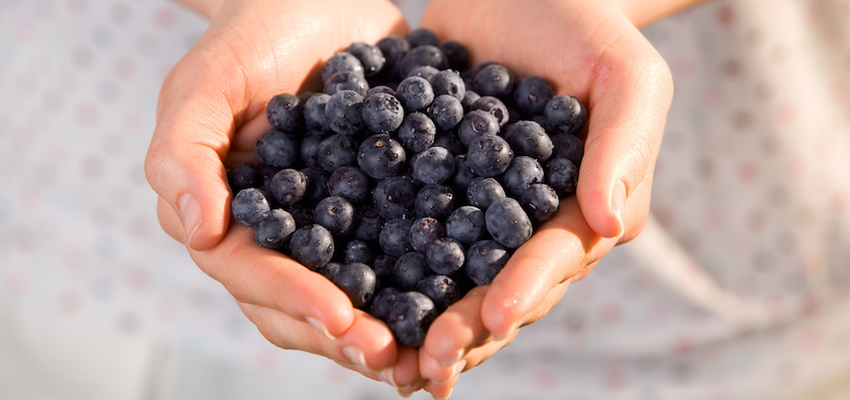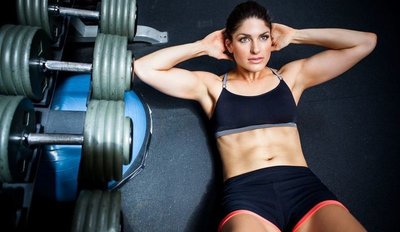Prevention Magazine gives their view on the Healthiest Protein Powders For Your Smoothie :)
Photo by marekuliuasz/Getty Images
Your smoothie recipe calls for a scoop of protein powder. So you go to the store only to discover dozens of different varieties: whey, soy, casein, pea, rice, hemp...the list goes on. Complicating matters, there are two-powder blends, those made with sugar and without, ones sourced from grass-fed dairy or non-GMO soy... Perhaps you'll just settle for the bag of potato chips in the next aisle.
But choosing a powder doesn't have to be akin to buying a new car. We're here to tell you that while all powders claim to be awesome, they're not all equal. Finding the right one for you depends on your health goals and dietary restrictions, and should also be based on a protein's bioavailability, or how easily it's absorbed by your body. "One of the more recent, accepted ways to assess the protein quality and bioavailability is the Protein Digestibility Corrected Amino Acid Score," says Jennifer McDaniel, RD, spokesperson for the Academy of Nutrition and Dietetics. "PDCAAS ranks proteins on a quality scale of zero to one." The closer to one, the better.
With McDaniel's help, we've taken the most popular protein powders and ranked them by both quality and bioavailability, as well as their other perks (and pitfalls), so you know which one is best for you.
1. Whey Protein
Photo by deymos/Getty Images
Whey, derived from cow's milk, leads the herd as the best protein source. It's called a "complete" protein, meaning it contains all 9 essential amino acids—the ones your body can't make on its own. Whey enters your blood stream faster than any other protein and boasts the highest level of the amino acid leucine, good for providing muscles with the necessary fuel to power through a workout and build muscle. In fact, whey is the most effective powder at building muscle; so if that's a goal, aim to consume it within an hour after exercise.
Choose this if: You simply want the best powder to increase your protein intake or are looking to build or maintain muscle.
What to look for: You have a couple choices: If maximum protein is what you're after, choose a whey protein isolate or whey hydrolysate—these are higher protein (90%) and contain a bit less fat, carbs, and lactose. If a super clean product with slightly less protein is more your taste, opt for a concentrate (80%)—these are readily available in organic, grass-fed varieties which contain no trace hormones, pesticides, or grain feed byproducts.
We like: Source Organic Grass-Fed Whey Protein Concentrate and
Now Foods Whey Protein IsolatePDCAA Score: 1.0
2. Casein ProteinCasein, the main protein in milk, is absorbed more slowly than whey, so it's not quite as efficient at building muscle. But it can leave you feeling fuller longer, which makes it a great addition to meal-replacement smoothies or your morning oatmeal. Casein has also been found to enhance muscle building when blended with whey in a post-workout shake, such as
these 10 smoothie recipes.
Choose this if: You generally use protein powder as a meal replacement or before bed, or if you want to combine it with whey for optimal muscle-building effects.
What to look for: Opt for micellar casein, the slowest-digesting casein. Like with whey, choose casein made with organic, grass-fed dairy if possible; or free of growth hormones.
We like: Naked CaseinPDCAA Score: 1.0
3. Egg White ProteinEgg white protein is just what it sounds like: Dried whites that have been turned into a powder. This protein digests slower than whey but faster than casein. Although not quite as good as whey or casein in terms of muscle protein synthesis, it's still a good option in a post-workout or meal-replacement smoothie.
Choose this if: You're allergic to or don't eat dairy (e.g. Paleo dieters), but still want a high-quality complete protein.
What type: Your only option is "egg white powder," sometimes called "egg white albumen." If you eat organic or cage-free eggs as part of your diet, you should look for the same in a powder. This may be hard to find, however, so consider opting for organic pasteurized liquid egg whites as an alternative.
We like: GEO Organic Plain Egg White Protein PowderPDCAA Score: 1.0
4. Soy ProteinSoy protein is made from ground soybeans that have been dehulled and defatted. It digests at a moderate rate, like egg white protein, and contains greater amounts of the amino acids glutamine and arginine, which may help support immune function, digestive health, and brain function. It's a complete protein and considered the most effective plant-derived source for building or maintaining muscle, but the verdict is still out on its potential health risks for women with a history of estrogen-related cancers and men with lower testosterone levels. If you fall into either camp, you may want to steer clear, or at least vary your protein sources.
Choose this if: You're vegan and want the best plant-based complete protein to help build muscle, stay full, or simply reach your daily protein quota.
What type: Soy isolate contains more protein than concentrate, but also more isoflavones—the controversial compounds capable of exerting estrogen-like effects on the body. If you want to avoid GMOs, select an organic or Non-GMO certified product.
We like: Bob's Red Mill Premeium Isolated Soy Protein Powder and
Swanson Organic Soy PowderPDCAA Score: 1.0
5. Pea ProteinPea protein, derived from the yellow pea, is the most highly digestible of the plant proteins, making it a good alternative for anyone with a sensitive stomach who doesn't want to do dairy or soy. But it's not a complete protein—it's low in 2 amino acids—so pair it with another plant-based protein such as hemp or rice to round out its amino acid profile and make it "complete."
Choose this if: You avoid animal-derived products, but don't want to eat soy, or if you have digestive issues.
What type: If you want higher protein content, choose a "pea protein isolate." The slightly lower-protein "pea protein powder" is also a good choice, and readily available in organic varieties.
We like: Swanson Organic Pea Protein PowderPDCAAS: 0.69
6. Hemp Protein
Photo by marekuliuasz/Getty Images
Hemp protein is made from nutrient-packed hemp seeds, and while it's not the best for boosting muscle because of its lower protein content (most contain just 10 to 15 grams per scoop, depending on the brand, compared to about 25 grams in whey and 22 grams in soy) and PDCAA score, it does provide a good dose of fiber and omega-3 fatty acids. Pair it with rice or pea protein to round out its amino-acid profile and make it complete.
Choose this if: You want to ramp up your overall nutrient intake and don't have strong protein needs.
What type: Most brands will feature "hemp protein," which retains hemp's healthy fiber and fats; but some newer options feature "hemp protein concentrate," which will be higher in protein, but stripped of those other nutrients.
We like: Manitoba Harvest HempPro 50 and
Manitoba Harvest HempPro 70PDCAAS: 0.46
Picking Your PowderWhen you've settled on the best protein for you, there are still countless brands competing for your business. Here are a few tips to keep in mind as you scan the labels:
- If your protein is marketed as a specific type of protein (e.g. whey isolate), make sure that's the first ingredient in the ingredient list.
- Scan for artificial sweeteners. To keep the carb count low, companies sometimes use these instead of real sugar.
- Make sure the ingredient list is short. You're buying a protein powder for the protein, after all, not the additives.
- Pick a neutral flavor to get the most bang for your buck. The most versatile protein powders are the unflavored and vanilla-flavored options.
- If you buy organic or non-GMO foods, you should look for the same in a powder.













